It felt like any other spring break when I flew to Honolulu in March 2012, and headed straight to my family’s sushi restaurant, tucked away in the bottom of an old condo tower a quarter-mile from tourist-thronged Waikiki Beach.
My Korean parents opened their first takeaway sushi restaurant in 1997 after moving to Hawaii from the suburbs of Dallas, Texas, where they spent years working in Latino swap meets to save money. I matured from child to loudmouthed teen in a series of 500-square-foot restaurants and had an intimate sense of what made our sushi joints tick. The scent of chilled fish and hot oil in the deep fryer, where I’ve cooked hundreds of little shrimp to golden-crisp tempura perfection, have imprinted on me like every good Proustian moment does. But on this balmy afternoon, as I stepped past the front door and felt the cool A/C on my neck, I smelled something foreign. Parting the cloth curtain that separated the kitchen from the dining area, I saw my dad standing over a griddle, flipping a half-dozen burgers with a grin on his face.
“What the heck are you doing? Who is that for?” I asked in Korean, confused.
“Hamburgers. People have been asking for them. I figured we ought to serve them,” he replied, not missing a beat.
The edges of my curious smile unfurled into a horrified maw as I realized my parents were selling burgers out of a sushi shop. Denial and some petty form of anger flowed forth: Were we going broke? Did they have any idea how stupid the idea was? Didn’t my dad know that a menu that stuck to the Japanese hits was key to being a respectable sushi shop?
“You’re so dramatic,” my mom said with a giggle. “People like us. They’ll like this.”
And you know what? They were right. I’d momentarily forgotten that they were another set of pragmatic immigrants in a long line of people brave enough to journey to America — and bold enough to birth restaurants with a bewildering clash of cuisines, existing dining norms be damned.
Historically, “fusion” foods have formed gradually as different ethnic communities meet in a single part of the world, challenged by disparate palates and unfamiliar native ingredients. The examples are countless, stretch around the globe and in recent years have been publicly investigated and interrogated most notably by the likes of Anthony Bourdain and David Chang. Currently uber-trendy Japanese ramen, for instance, has its roots in Chinese noodles — the similar-sounding phrase la mian in Chinese means “pulled noodle.” They were popularized in Tokyo from the late 1850s on, with another surge in popularity after World War II when occupying U.S. forces boosted imports of wheat as a way to stave off food shortages, which led to even more noodle production, per ramen historian George Solt.
Similarly, Mexico City is famous for its al pastor tacos, but the idea to shave off slivers of seasoned pork from a vertical spit-grill into warm tortillas was the direct descendant of the shawarma brought by Lebanese immigrants in the 19th and early 20th centuries. Not to mention, banh mi sandwiches and pho noodle soup, practically the national dishes of Vietnam, only came about under French colonial rule, which brought baguettes and clear beef stock alongside troops and rifles. “Vietnamese food is probably the most classic fusion food, and greatest success story as a fusion food, of the past hundred years,” Chang declares in one episode of his Netflix series Ugly Delicious.
More contemporary examples of “fusion” started with Wolfgang Puck and Jean-Georges Vongerichten, who were among the first chefs to infuse their dishes with ingredients from Asian and Latin-American cuisines. The 1980s were a boom time for such experiments, but fusion cooking began going off the rails in the 1990s as more and more European-trained kitchens began throwing around flavors in a hackneyed effort to sell exoticism. By 2001, even New York magazine was warning readers to forget fusion joints, noting that “self-consciously crossing borders rarely creates something fresh and delicious.”
Many chefs have viewed the “F” word as an insult ever since. At the same time, though, a new wave of fusion has entered the national consciousness as the next generation of chefs lean into the food combinations they grew up eating. The aforementioned Chang kickstarted a dynasty in New York City with his Momofuku Noodle Bar, which has expanded into a network of restaurants that infuse the Korean flavors of his youth into a Western context — e.g., a whole short rib smoked like Texas barbecue but served with rice and Korean condiments and wrapped in lettuce leaves. Roy Choi rose to stardom by selling Korean(ish) tacos from a truck in L.A. after years of overseeing banal fine dining in a series of hotels. And Danny Bowien has pushed Chinese-American food in San Francisco with a no-holds-barred stonerism at Mission Chinese, selling reams of kung pao pastrami and other treats under the winking banner of “Americanized Oriental Food.”
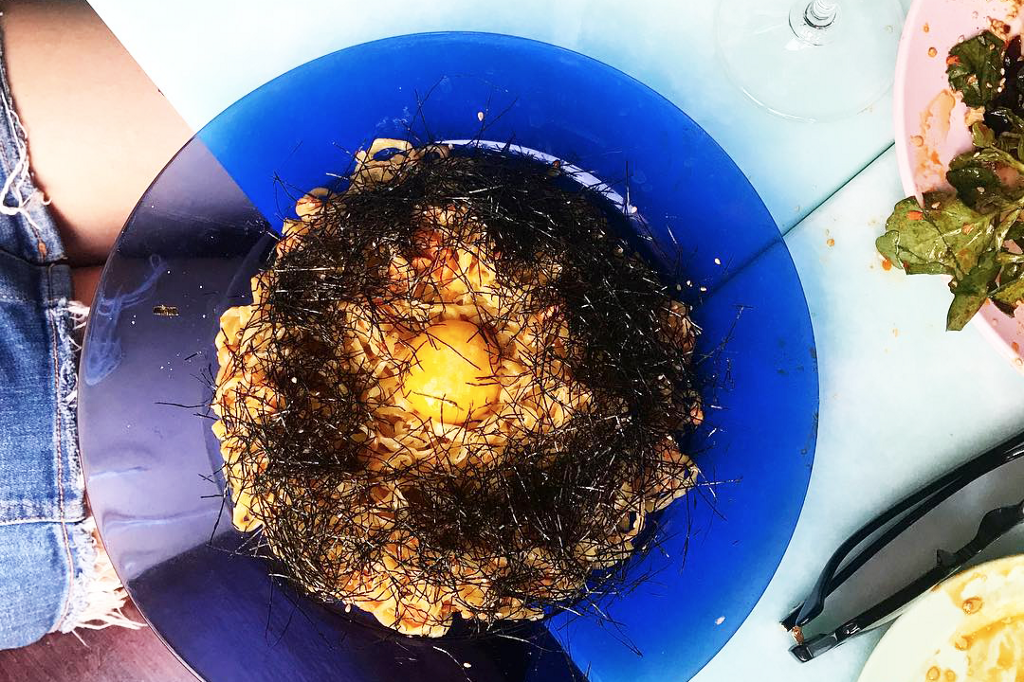
“The European chefs were kind of making what they always cooked, but throwing in chiles, miso, ginger or soy sauce,” says famed food critic Jonathan Gold, now at the L.A. Times. “Then you have the second wave that came mostly with second-generation chefs, either born here or arrived at an early age, who went to the fancy cooking schools but came back and wanted to recreate dishes they grew up with. They use Western techniques to their ends rather than using ingredients as an exoticizing tool. At some point, the dishes can be the same because you’re approaching an idea from two different directions. But the latter wave of fusion food has always been a much more interesting kind of cooking for me.”
All that said, I’m interested in something slightly different and definitely less known and celebrated — the restaurants that don’t aim to blend flavors and influences into a single dish, but serve menus that bring together two seemingly distinct cuisines in the same dining room: Indian and soul food; Chinese and Guatemalan; Mexican and American; and so on. Strange at first sight, but routinely excellent, these restaurants sprout in any city with an active immigrant scene, stretching from L.A. to New York City to London and beyond.
They usually don’t set out to serve two menus from across the world, but nobody’s complaining about why these flavors work together — and the stories they tell about the people behind them.

On the western edge of Downtown Los Angeles is MacArthur Park, a 35-acre chunk of land distinguished first by its petite lake and second by the throngs of Latino street vendors that line the sidewalks. Across the street from the park sits Beijing Express. Its sign touts, in order: “Chinese Fast Food”; “Mexican and Guatemalan Food”; and “Antojitos Mexicanos Todos Los Días,” which translates to “Mexican snacks every day.”
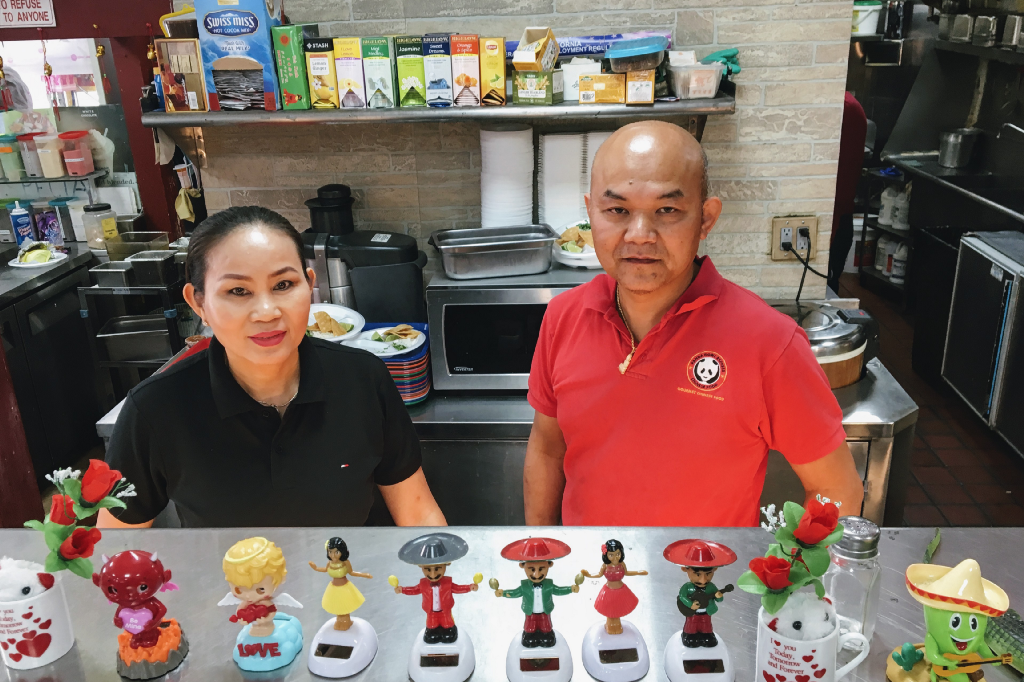
By 2011, Tony Khouv and Emily Lim had already opened and sold a Chinese restaurant in Huntington Beach, 35 miles away. They figured they could convert a Latino bakery into a Chinese takeout joint without too much trouble, as the two Cambodian immigrants (Khouv arrived in 1981, Lim in 1996) already knew the Chinese-American repertoire of stir-fried noodles and orange chicken well. Spotting the throngs of Central Americans outside their door, however, took them back to the drawing board. “I saw the food vendors on the street, what people were eating,” Khouv recalls. “We had Mexican cooks, so we just tasted things they knew how to make. I did research, changed some spices and made sure everything had fresh ingredients.”
Khouv says 80 percent of the menu is now Mexican and Guatemalan food, with the seafood soup being a favorite draw. (“People come from places like Santa Ana in Orange County, to eat it,” he boasts). Still, it’s just as common to see heaping plates of orange chicken and shrimp fried rice next to bowls of soup on the well-worn formica tables.
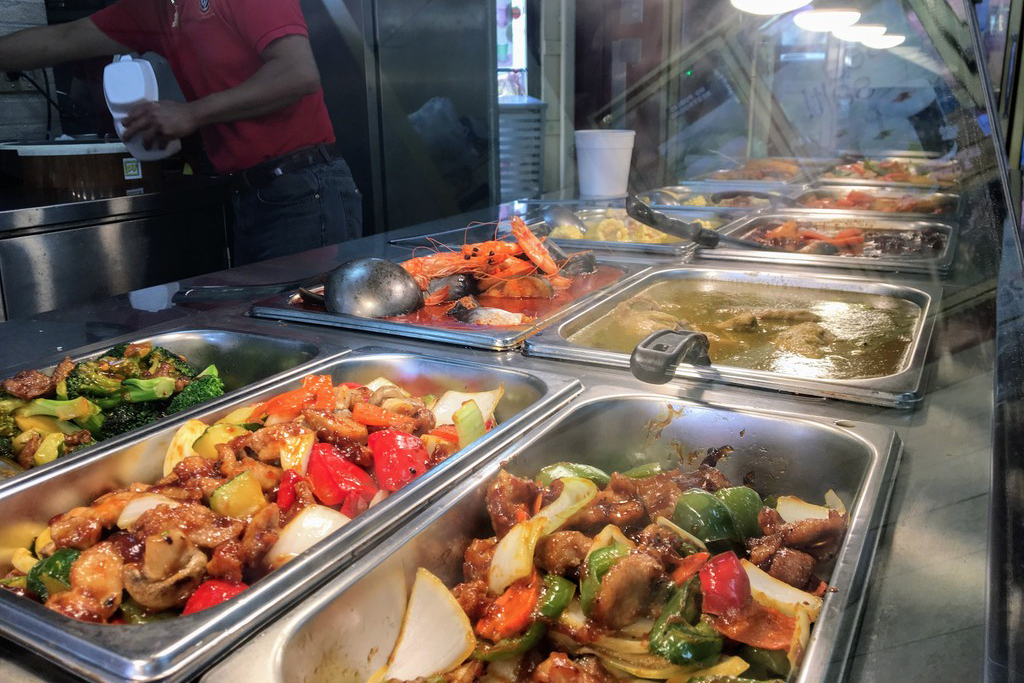
The mainstream appeal of Chinese food in the U.S. makes it a fulcrum for all sorts of hybrid menus, seen in the numerous other Chinese takeout spots in L.A. that also serve Southern-style fried chicken, and especially in the historic “Chino-Latino” eateries that once held court across New York City — a handful of which still remain today.
Flor de Mayo, with locations on the Upper West Side and in Uptown Manhattan, has been serving a split menu of Peruvian and Chinese dishes for 40 years. Second-generation owner Nelson Cho took over the business from his father, who immigrated from China to Peru, then to New York City, in the 1960s. Today, plates of tangy ceviche and savory smashed plantains still fly out of the kitchen alongside bowls of egg foo young and lo mein.
“My dad learned the skills of Hong Kong cuisine when he was young, and in Peru, he learned the local food, which a lot of people don’t realize was also influenced by Japanese immigrant chefs who owned restaurants,” Cho explains. “My grandfather from my mom’s side went to Cuba, where he learned Cuban cooking. He went to New York too, to run a Cuban-Chinese restaurant. It’s in our family.”
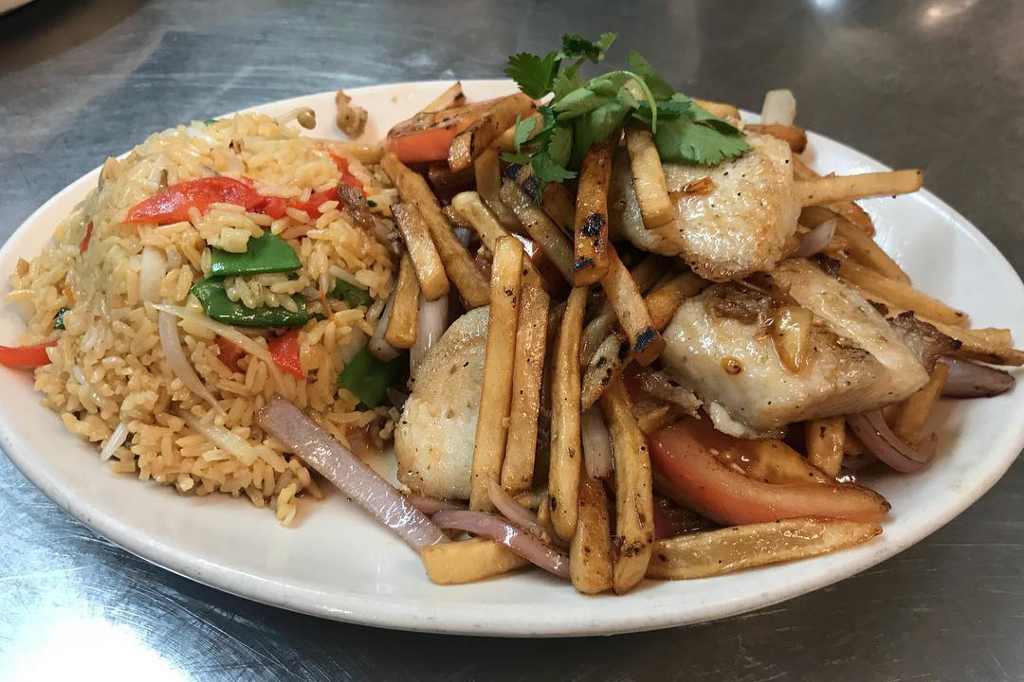
Unlike the fusion experiments led by Euro-trained fine-dining chefs, immigrant-run hybrid spots are usually born out of economic necessity, not self-conscious creativity. Rajun Cajun opened in Chicago’s Hyde Park neighborhood in 1993, when owner Trushar Patel took over a Southern joint with an idea of creating an Indian restaurant. Worried a dramatic shift would lead to a loss of existing customers, Patel decided to hang onto some soul-food items while transitioning the menu to Indian specialties. That transition, though, never really took place.
“A lot of people are confused by the name because we’re mostly Indian food, but it’s like the word rajah, an Indian prince or ruler. They mispronounce ‘Rajun,’” Patel says with a laugh. “We still have locals who get the soul food, but we always give them a taste of some Indian dishes if they want to try something new for them.”
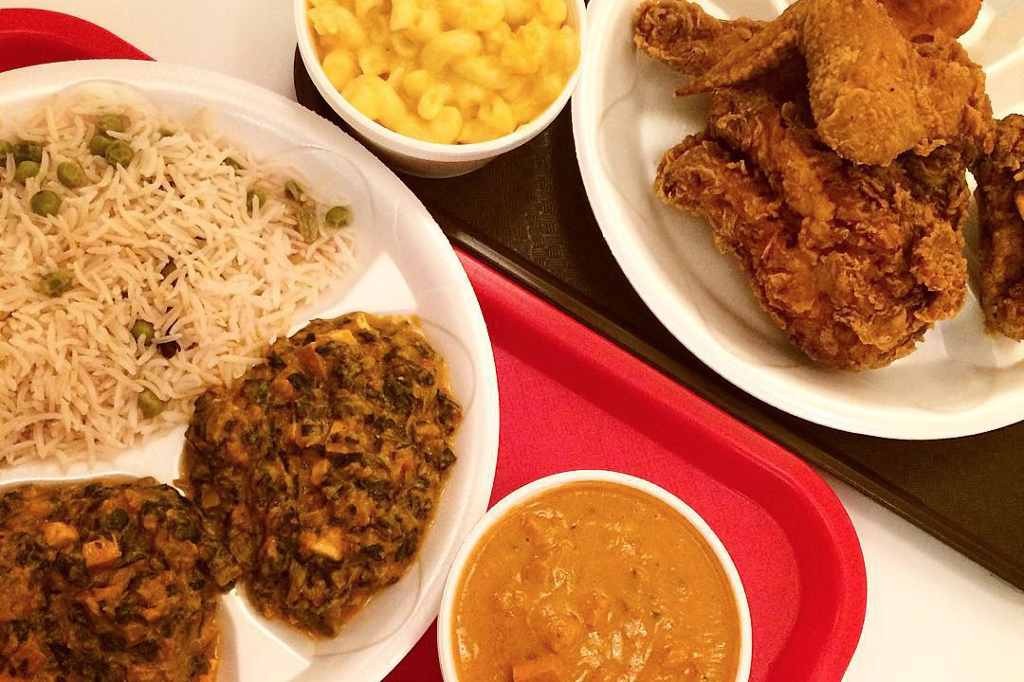
The risk with this kind of multi-menu genre-bending is that the casual diner can assume something has gone heinously wrong in a restaurant that, in my parents’ case, serves sushi, burgers and Korean food all from the same kitchen. “Authenticity” is a key, if misguided, characteristic for diners to seek — and Koreans running a sushi shop, let alone serving other cuisines, can constitute a red flag. I remember how Yelp reviews often mentioned my parents’ ethnicity, or said the dishes were nothing like real Japanese food, or good in spite of being hybridized, even though there was plenty of traditional sushi on the menu.
“People do discriminate against a mixed menu. They’ll think, Sushi or burger? Are they going broke? Seems like bullshit, right?” my dad cracks. “But it depends on the location. We see Japanese tourists, Chinese, white, black, Europeans. Some people would come in, not eat sushi, and ask, ‘Do you have any American food?’ So we decided to make it, as fresh as we could, to order. And we saw some real increases in customers.”
Personally, I’ve never quite understood the urge to consider authenticity as an important trait of a restaurant, considering how loaded and unclear the definition of it is. The notion that people of a certain ethnicity are most qualified to cook a certain kind of food doesn’t hold water when you consider that anyone can learn technique and history of a cuisine if they simply care enough to do so. Andy Ricker, the chef-restaurateur of Pok Pok in Portland and New York City, might be a white guy from Vermont, but he’s also spent the last 25 years tirelessly traveling through Thailand, learning from Thai cooks, speaking Thai and becoming a legitimate authority on regional Thai food.
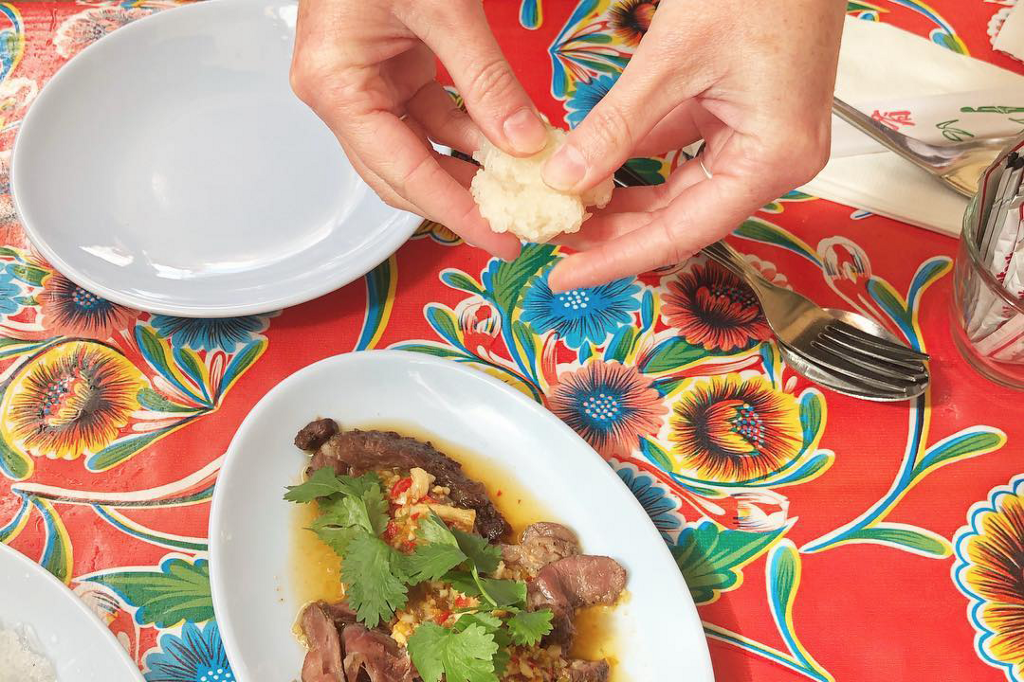
The instinct to draw borders for authenticity’s sake isn’t contained to American audiences, either. In 2014, Malaysia took the stunning move of banning foreign cooks in certain areas, claiming it was in service of protecting “authentic” street food. That didn’t sit well with Malay food writer Surekha Ragavan of Time Out Kuala Lumpur, who argued in an op-ed that the move is “the very dangerous idea of a cuisine belonging to one culture, one race or one shade of skin; or the outdated notion that food is a product of nature, but never of nurture.”
Authentic or not, my parents’ sushi business won’t leave a decades-long legacy, considering I have no interest in taking it over. But many hybrid restaurants have become landmarks in their communities. One such spot in L.A. is Dino’s Chicken and Burgers, first opened by Greek immigrant Demetrios K. Pantazis and some family members in 1968. At first, it served burgers and fried chicken like a number of other similar restaurants in L.A., but soon, it became famous for its Pollo Maniaco, grilled chicken with a Greek marinade that was cut with the Mexican chiles Pantazis found across the city.
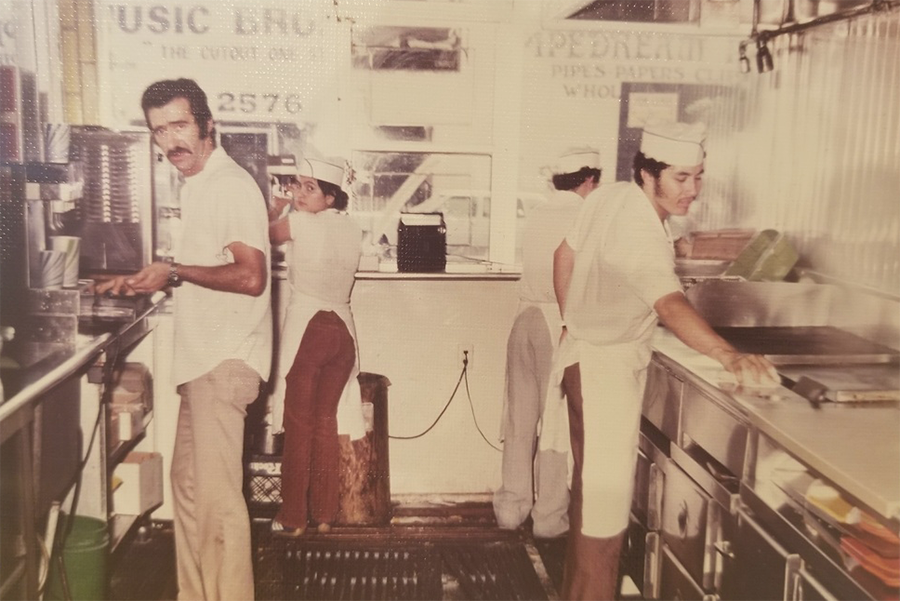
There are five Dino’s around L.A. County now, and countless other American-Mexican restaurants with grilled chicken that, if not descendents of Dino’s, are certainly close cousins. Daughter Nicole Pantazis-Pitsos, who still runs Dino’s with the extended Pantazis family, notes that many Greek immigrants like her father often arrived in the U.S. with little money and formal education, and stuck to running small businesses, especially in the hospitality industry, as a result. “It’s such an amazing thing to have parents who worked so hard, and it was a time where they could start at the bottom and end up 1,000 percent higher through an eagerness to make ends meet,” Pantazis-Pitsos says. “As a small business, they competed by offering something familiar to people and being open to new items. We create fusion mixtures in order to survive.”
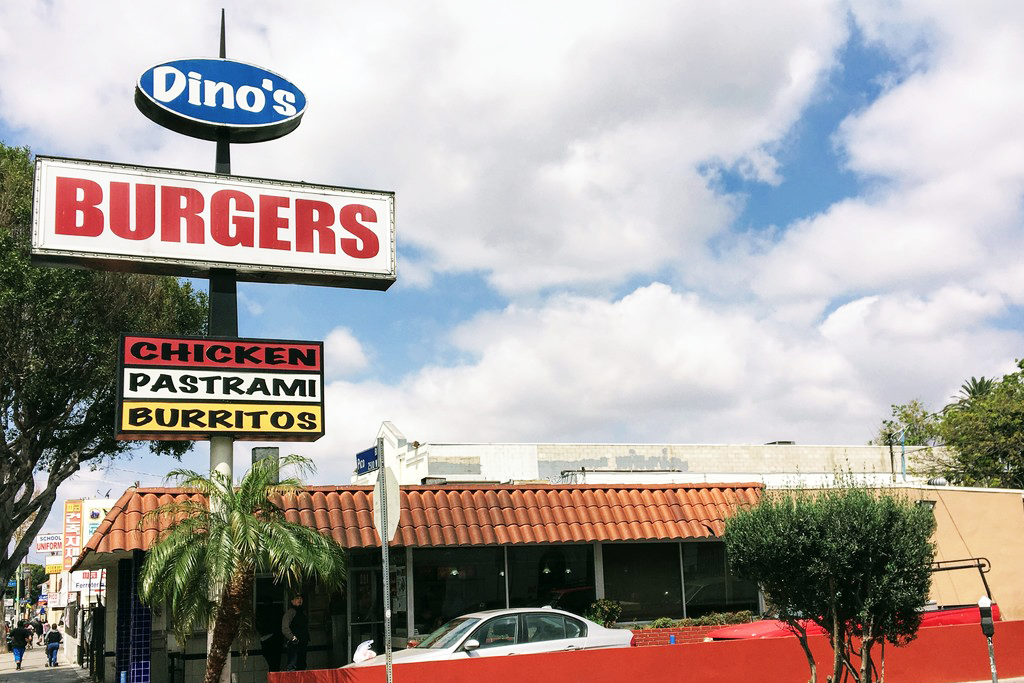
The sheer cost and difficulty of running a restaurant in a major city means many other humble hybrid restaurants may struggle to stick around. Flor de Mayo’s Cho has observed the Chino-Latino scene slowly die over the last decade due to a combination of rising rents and changing tastes, and he wonders aloud if another 10 years is too ambitious a goal for his own restaurant. Rajun Cajun will likely meet its finish line soon, too: Patel is 53 and gearing up for retirement, with no one in mind to continue running the restaurant, though he daydreams about staying on part-time to teach a new owner how to make Indian and soul food in the same kitchen.
As for my parents, well, their life as Korean proprietors of a strange and successful Japanese-American restaurant is no more. They’ve now gone into semi-retirement — by buying a busy neighborhood Italian joint to manage. I don’t think they can help it.

